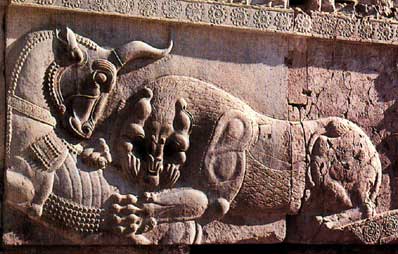The ancient Persians accomplished many things, including the invention of the world’s first chariot-driven postal system, the creation of a global currency and the establishment of an empire more than two million square miles in extent. But the concept of written history seems never to have appealed to them, so as a people they have been transmitted to posterity almost exclusively by Greek writers such as Herodotus – and because the Greeks regarded themselves as the sworn enemies of the Persians, their piecemeal accounts are less than trustworthy, to say the least. The true story of the Persians’ actual exploits and motives, their political and religious beliefs, their morality and way of life, remains not so much a closed book as an unwritten one.
Hence the title of the British Museum’s new exhibition, “Forgotten Empire”, formed from a cornucopia of ancient Persian statues and friezes, finely wrought jewellery, gold and silver tableware and a multitude of coins, seals and cult objects. It paints a necessarily blurred portrait of a society that survives only in the form of fragments and relics: a riddle wrapped in a mystery inside an enigma. The works are displayed in the labyrinthine and cramped circuit of low-lit galleries that constitutes – in such contrast to the vast and airy emptiness of Norman Foster’s Great Court – the British Museum’s temporary exhibition space. On this occasion, the effect is not entirely inapt, resembling a treasure trove stumbled upon in the gloaming.
One of the smallest but most thrilling exhibits in the show is a square silver plaque excavated from the great palace of Persepolis, principal seat of the Persian emperors from 550 BC to 330 BC – the year when Alexander the Great sacked Persepolis, after which the city was never to be inhabited again. The same...

“Forgotten Empire: The World of Ancient Persia” at The British Museum 2005
18-09-2005

